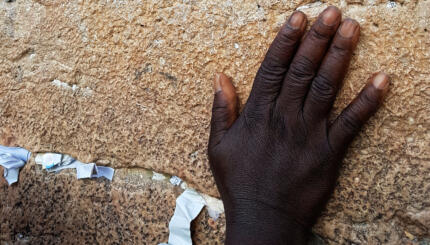In the following article, the author offers an overview of the many changes that synagogue music has undergone in recent decades. She intermingles the narrative with her own views on the reasons for some trends, and some scholars might dispute some of her conclusions. Excerpted with permission from Discovering Jewish Music (Jewish Publication Society).
The period following World War II saw major demographic and psychological changes in the American Jewish community. A new wave of immigration brought the remnants of war-ravaged Europe to American shores and closed the chapter on European leadership in Jewish music. Now it became necessary for American Jews to produce their own musical leaders. The seminaries that had been training rabbis since the late 19th century finally established schools to train cantors as well. Hebrew Union College-Jewish Institute of Religion opened its School of Sacred Music for cantors of the Reform movement in 1948 [and originally was intended to train cantors of all denominations]; the Jewish Theological Seminary started training Conservative cantors in its Cantors Institute in 1952; and the Cantorial Training Institute at Yeshiva University opened its doors to Orthodox cantors in 1954.
 The graduates of these schools faced a Jewish community different from what their predecessors had known. Returning soldiers eager to resume their lives and start families led to the growth of suburbia and the proliferation of synagogues outside major city centers. These new congregations were started by young people with strong ideas about their role in the synagogue service and eager to play an active part in determining their spiritual destinies.
The graduates of these schools faced a Jewish community different from what their predecessors had known. Returning soldiers eager to resume their lives and start families led to the growth of suburbia and the proliferation of synagogues outside major city centers. These new congregations were started by young people with strong ideas about their role in the synagogue service and eager to play an active part in determining their spiritual destinies.
Difficult Transition
Unfortunately, the transition was not a smooth one. The cantorial training schools were dominated by faculty who had trained with the old European models. The 1954 reissuing of 25 volumes known as the Out-of-Print Classics of Synagogue Music reaffirmed the role of music by Sulzer, Lewandowski, and Naumbourg in the synagogue and the style of nusah [musical motifs]promulgated by Gerovitsch and others of the 19th century. The “high church” style of practice continued to dominate the training of Reform cantors, and the role of the cantor as not just soloist, but also sole purveyor–and conservator–of synagogue music in Conservative and Orthodox synagogues was pronounced from the ivory towers of the cantorial schools.

Help us keep Jewish knowledge accessible to millions of people around the world.
Your donation to My Jewish Learning fuels endless journeys of Jewish discovery. With your help, My Jewish Learning can continue to provide nonstop opportunities for learning, connection and growth.
But the congregants in the pews wanted to sing, too! A second generation of Orthodox American Jews had already begun to establish “Young Israel” synagogues, where shelihei tzibbur [prayer leaders]taken from among the many male congregants capable of leading regular and weekday services led their fellow worshipers in song, thereby replacing increasing numbers of traditionally oriented (and some felt, domineering) hazzanim [cantors].
In the Conservative and Reform movements, young people empowered by their affirmative experiences in denominationally affiliated summer camps rejected the notion of trading their summertime active participation for docile subservience to a cantor and choir back at their home synagogues. The Conservative movement was the first to attempt a response. The Cantors Assembly published Zamru Lo, a three-volume anthology of “congregational tunes” designed to increase the participation of worshipers in the synagogue service, while still maintaining the traditional nusah.
Composers Take Note
Composers also started considering the needs of congregants when writing for the cantor and/or the choir. “Singable refrains” allowed congregants to take an active role in at least part of a composition chiefly scored for cantor and/or choir. Max Wohlberg (1907-1996) was singularly successful at writing cantorial recitatives as well as longer settings that remained faithful to traditional nusah while also providing an opportunity for the congregation to sing.
The music of Chicago-based Max Janowski (1917-1991) had a similar effect on the music of Reform synagogues. The Hasidic-style lilt of his largely unison Yismehu is a favorite of many congregations; the unison refrain of his moving Sim Shalom enables the congregation to take an active role in its presentation; and his lyrical, strophic ve-Shomeru enables the congregation to sing along with the melody, even as the choir intones its lovely harmonies.
There were certainly composers who followed Janowski’s example. Canadian composers Srul Irving Glick (1939-2002) and Ben Steinberg (b. 1930) were especially successful at writing music that welcomed congregational participation. Inaddition, composers from Herbert Fromm (1905-1995), to Samuel Adler (b. 1928), to Stephen Richards (b. 1935) have arranged well-known composed melodies and mi-Sinai tunes for congregational singing.
Blurring the Boundary
The border between popular song literature and the music of worship was effectively breached. A succession of popular American artists began (or, like Debbie Friedman and a more musically sophisticated Michael Isaacson, continued) to contribute music that was just as successful in the synagogue on Saturday morning as it was in concert on Saturday night. Not surprisingly, the Reform movement led the way in this more liberal musical style. The guitars that dominated American folk and popular music were welcome in many Reform synagogues and even replaced the organ as the instrument of choice in congregations moving away from the decorous classical style of Sulzer and Lewandowski to a more inviting and participatory “warm Reform” service.
The Orthodox movement continued to eschew instrumental accompaniment, but many congregations were equally active in adopting some more contemporary sounds into their services. The Orthodox also borrowed tunes that had been written originally for non-liturgical presentation but that inexorably crept into synagogal use. The common preference among Orthodox synagogues to utilize lay shelihei tzibbur (as opposed to seminary-trained hazzanim) also contributed to the random utilization of contrafacted melodies from among popular Israeli and American songs.
The Conservative movement lagged somewhat behind the popular tendency to insert contemporary songs and styles into the liturgy. The sanctuaries where adults worshiped tended to hold fast to a traditional body of music taught to cantorial students at the movement’s Jewish Theological Seminary and/or gathered in Zamru Lo. Members of the movement’s United Synagogue Youth groups and campers and staff at Conservative Ramah Camps eagerly adopted popular tunes into their own youth services, but the hegemony of the Conservative cantorate rejected these innovations as “camp songs.” Moreover, the music of Israel was embraced in settings throughout the Conservative community: Ramah summer camps, Solomon Schechter Day Schools, adult education programs, and beyond. That broad and seemingly never-ending font of new material was largely a distraction from and a disincentive to the creation of new music from within the movement’s ranks.
Implied pressure placed on Conservative cantors by the popularity of “alternative” music being utilized among youth groups and in havurot (often breakaways from the more traditional services conducted in Conservative synagogues) led to a gradual willingness of Conservative cantors and their congregations to experiment with the music of the synagogue. Some Conservative synagogues installed organs in their sanctuaries and occasionally used other instruments as well. The ordination of female cantors in 1987 brought dramatically new voices to the Conservative synagogue, and many of these women, whose presence itself represented a major change, were more inclined to welcome innovation into the service.
The B’nai Jeshurun Phenomenon
The real watershed in congregational singing came, though, with the success of one Conservative synagogue on New York’s Upper West Side. B’nai Jeshurun, or “BJ” as it is affectionately known to its members (and derogatorily scorned by its detractors), gained wide-spread popular appeal during the tenure of Rabbi Michael Meyer (1985-1993) and continues now under the leadership of Rabbi Marcelo Bronstein, Rabbi J. Rolando Matalon, and Hazzan Ari Priven. It attracted hundreds of worshipers to regular services when it began adopting a family-friendly attitude and a repertoire of reverent but upbeat, new melodies (as well as “refurbished” versions of older tunes) that welcomed and embraced the Sabbath with fervent singing.
The contrast between the numbers of BJ attendees over-flowing onto Manhattan’s sidewalks and the number of empty pews in most other “mainstream” Conservative synagogues was directly attributed to B’nai Jeshurun’s music. Demand from within and outside the congregation inspired the synagogue’s leadership to record its melodies as teaching tools and as models for others to follow.
As the 21st century dawns, the future course of American synagogue music is not clear. Some traditionalists may decry the continuing preference for community singing–of any kind of music–over the preservation of nusahas the final “nail in the coffin” of Jewish musical continuity. For many, the “usurpation” of the role of cantor/ hazzanby celebrants and lay precentors appears to signal an ironic return to the anarchy of the early nineteenth century and a tragic surrendering of musical and professional ritual standards.
Others may applaud the enfranchisement of the congregation as an appropriate response to every Jew’s search for an active, participatory role in the synagogue. They may see the decline in choral singing as a victory for the community and herald the embrace of contemporary music as an inevitable and historically consistent response to a new era and the cultural heritage of its majority.
mitzvah
Pronounced: MITZ-vuh or meetz-VAH, Origin: Hebrew, commandment, also used to mean good deed.

Help us keep Jewish knowledge accessible to millions of people around the world.
Your donation to My Jewish Learning fuels endless journeys of Jewish discovery. With your help, My Jewish Learning can continue to provide nonstop opportunities for learning, connection and growth.


